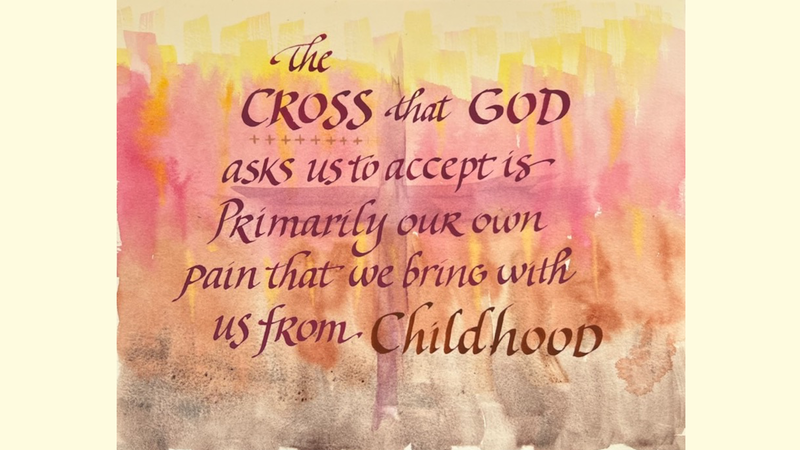 Year of Transitions In the midst of many transitions, The Minnesota Chapter of Contemplative Outreach continues to embody the vision of Contemplative Outreach International: embracing the transformative process in Christ through the practice of Centering Prayer. Post-Pandemic Transition Several Centering Prayer (CP) groups have returned to in-person gatherings, while others continue to meet online. We have over 55 groups listed on our webpage across the state. The daily 7:00 a.m. CP Zoom gathering, initiated during the pandemic, thrives with forty or more participants, including many from beyond our state's borders. Changes in Leadership and Structure In January 2023, Laurie Erickson gracefully stepped down from her role as Co-coordinator after more than six years of dedicated service. John Keller assumed the interim role alongside Adam Gordon as chapter coordinators, leading an evolving team of approximately 12 volunteers. The 2024 leadership team has established four standing committees, inviting regular Centering Prayer practitioners to contribute:
To foster fellowship and service, the chapter held two gatherings in October: an in-person event at St. Andrew’s Lutheran Church in Mahtomedi on October 7 and a Zoom meeting on October 23. These meetings are planned to be held annually. Online and Hybrid Meetings Zoom meetings became the norm during the pandemic, and the increased opportunities for connection and the convenience of online interactions remains a draw. Many CP groups, the leadership team, and United in Prayer Day now meet online. The annual fall retreat has adopted a hybrid format, balancing the complexities of both in-person and online elements. Several of our members have organized meetings on the Meditation Chapel, including Laurie Erickson (Peace Chapel, Thursdays at 7:00 p.m.) and Mary Lapham (Thomas Keating Chapel, Thursdays at 11:00 a.m.). And the Sunday Gathering group convenes by Zoom at 8:00 a.m. each week to more deeply consider contemplative authors and practices. Striking the right balance between online, in-person, and hybrid events remains a priority. Communication Needs Efforts are underway to enhance communication within and beyond the chapter. The website, diligently maintained by Adam Gordon and volunteers, serves as a valuable resource. As we transition into the new leadership structure, the chapter seeks a volunteer editor/communication director to organize a regular email newsletter and facilitate ongoing communication. Financial Report While coordinators, facilitators, and presenters serve as volunteers, the chapter incurs expenses for Zoom hosting, web services, printing, administrative costs, and speaker honorariums. Generous donations totaling over $3,000 contributed to the budget last year, keeping the chapter financially healthy. Continued support is welcomed in 2024, with contributions accepted through our Donations page. Minnesota Contemplative Outreach is incorporated as a non-profit in the state of Minnesota, but is not 501(c)(3) tax-exempt. Gifts over $250 intended for tax deductions are suggested to be made directly to the national organization, Contemplative Outreach. Gratitude The Leadership Team is thankful for all who served to strengthen the chapter: group facilitators, presenters, retreat speakers, and so many others. Together we are the stewards of this beautiful practice of consenting to God’s presence and action within. Together, we trust in the Holy Spirit to guide and strengthen our chapter in 2024. Minnesota Contemplative Outreach Leadership Team Adam Gordon and John Keller Co-coordinators  Carol Ann (Jaremba) Weber was born in Milwaukee, Wisconsin on December 3, 1946, the fourth of five children of Frank Jaremba and Sally (Szymczak) Jaremba. After a few college dates with Rick, Carol put a note on his ‘63 Chevy convertible. “To love another in the highest sense of the word is to wish that person the eternal possession of God and lead them to it.” With that wish they wed on April 6, 1968. Carol graduated from Marquette University with a BS in Nursing. Later she added a Master’s Degree in Pastoral Ministry from St. Mary’s University. Carol and Rick celebrated 55 years of life and marriage together. For more than 40 years they made their home on the Crow Wing River north of Staples, where they raised four children. They enjoyed wonderful friendships, family camping, travel and small town hospitality. Carol embraced a lifelong passion for the spiritual - and practical - which she shared through leading maternity and birthing classes, Public Health nursing, individual spiritual direction, leading and serving group contemplative retreats and being a reliable friend. Maya Angelo said, “Your legacy is every life that touched yours.” Thus you are Carol’s legacy. May you carry it on by being a friend and spiritual seeker. Thomas Keating said “Silence is God’s first language.” Carol took silence seriously. Carol is survived by her husband, Rick; son, Erik Weber and his wife, Kristina, of Jamestown, North Dakota; daughter, Marlo Turcotte and her husband, William, of Excelsior; son, Luke Weber of New Brighton and daughter, Monica Weber and her husband, Jesse Wondra, of South St. Paul. Her beloved grandchildren are: Henrik, Oscar, Nathan, Jack, Mark, Axl and Delilah. Her sister, Christine Centner, lives in Manitowoc, WI. In lieu of flowers please give a gift to Our Lady of Peace Hospice in St. Paul, Minnesota Contemplative Outreach, or the charity of your choice. by Jody Reis Johnson
Let today be today not tomorrow or the weekend with its gypsy promises of something more or last week when you did something you couldn’t undo and wished it was already this week because by now you would have forgotten or forgiven. Let today be itself; there is warm soup and a crisp apple and the leaves’ first flare of gold. Be still let it come to you as an embrace merciful and plentiful enough to carry you until tomorrow. (Published in the September 2023 Contemplative Outreach e-bulletin) 2022 Fall Retreat Presentations by Jenny Adamson
|
Presence & Action Blog
MN Contemplative Outreach publishes articles written by, and for, practitioners. They are designed to deepen understanding of the Centering Prayer Practice and its power to change lives. Categories
All
Archives
February 2024
|







 RSS Feed
RSS Feed